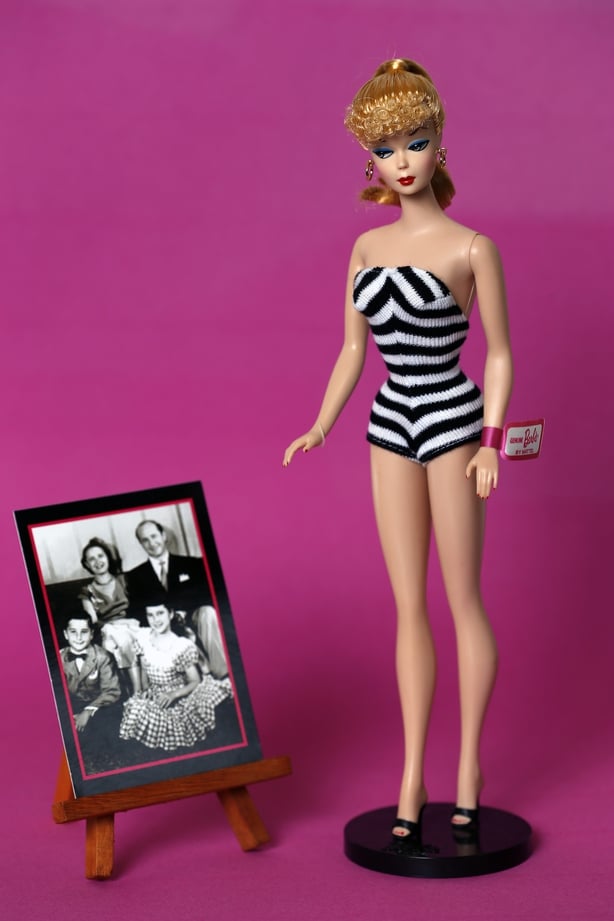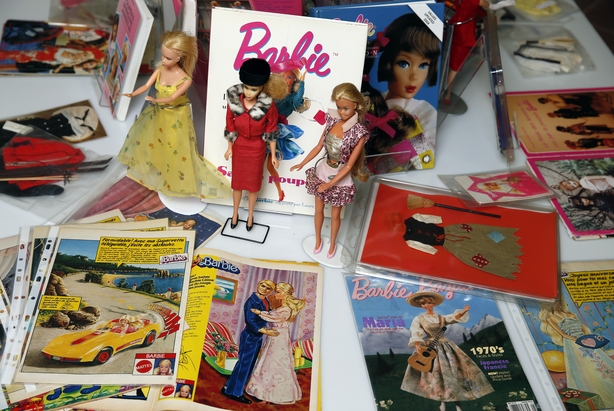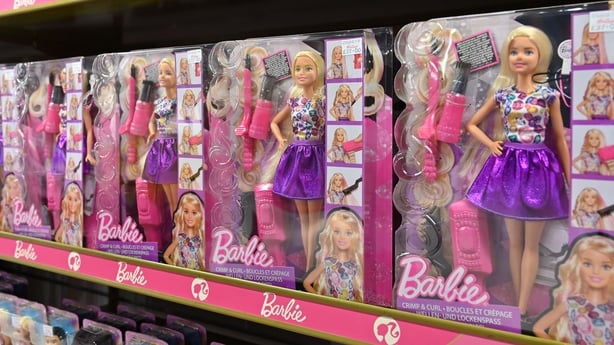Who would have thought that when a new children's toy was released on a day like any other in 1959, we would still be feeling the effects 63 years later?
Synonymous with hot pink, hyper femininity and haute couture, Barbie has provided a cultural touchstone for generations. An 11.5 inch plastic doll whose impact on society has been seemingly infinite, Barbie has been a polarising figure since her inception.
People fall into one of two categories; believing the doll to be a positive role model for young women, or being adamant that Barbie represents the antithesis of feminist ideals.
Quickly transforming from a plaything to a bone of contention across the globe, Barbie has been thoroughly critiqued for setting an unattainable beauty standard that excludes those who lie beyond the bounds of thin, white and able-bodied.
So, how has this children’s toy remained indisputably the world’s most famous doll for over half a century?
At a time when young girls’ playtime served as a dress rehearsal for motherhood, Ruth Handler - founder and president of Mattel, Inc. - felt frustration at her daughter’s lack of options. Playing with baby dolls as a test run for their future role as homemaker, there was a gap in the market for some aspirational escapism and a little liberation.
By 1959, Handler had come up with the concept of Barbie and based her initial designs on the German Lilli doll, a sexy gag gift given out at bachelor parties. Moulding exaggerated womanly proportions (read: big boobs, tiny waist, slender limbs) out of plastic, Handler’s colleagues reportedly laughed her out of the room, certain that no child would ever want to play with a doll like Barbie.

On March 9 1959, the very first Barbie doll debuted at the New York Toy Fair clad in a black and white striped swimsuit, gold hoops and a pair of shades, gazing demurely into the distance. In her 1994 autobiography Dream Doll: The Ruth Handler Story, the inventor writes; "My whole philosophy of Barbie was that through the doll, little girls could be anything [they] wanted to be. Barbie always represented the fact that a woman has choices."
Barbie was Handler’s magnum opus. A proud lipstick feminist and hugely successful entrepreneur, who changed the toy industry forever, the inventor endeavoured to teach young girls with limitless potential that the world was their oyster.
In the decades since her launch, Barbara Millicent Roberts - to give her her full title, named after Handler’s daughter - has amassed quite the CV. Her 200+ careers include fashion designer, doctor, pilot, engineer and teacher, to name but a few. First shattering the plastic ceiling in the '90s by running for President years before any woman made it onto the ballot, Barbie’s moon landing even came four years before Neil Armstrong’s!
One of the doll’s first major controversies came in the ‘60s, with the release of Slumber Party Barbie, which conveniently came with a weighing scales permanently fixed on 110lbs and a nifty little diet book with one stellar piece of advice; don’t eat. Later, a Teen Talk Barbie was released bemoaning the fact that ‘math class is tough’, which incited some seriously warranted criticism.
The eternal nineteen year old’s measurements have been scrutinised for generations, and scaled up to human size, a real life Barbie would be 5’9" in heigh with a 39" bust, an 18" waist, 33" hips and a size three shoe. Literally, same. Studies have since shown that girls aged 5 to 8 years old report lower body esteem and greater desire to be thinner when exposed to Barbie.
One 2006 report found that "even if dolls cease to function as aspirational role models for older girls, early exposure to dolls epitomising an unrealistically thin body ideal may damage girls’ body image, which could contribute to an increased risk of disordered eating."
While Mattel has long denied Barbie’s influence on body image, citing catwalk models and dissatisfied mothers as the source of childhood insecurities, it has also been argued that the doll’s body was never meant to be realistic. Designed for kids to dress and undress, pose and play with, they may be able to justify their intentions, but they cannot overlook their impact.

It was not until a full decade after Barbie’s launch that Christie, one of the first Black dolls, was put on shelves. It was another decade until the first Black and Hispanic dolls named Barbie were released. For a company that prides itself on reflecting the world around us back to young children, ensuring diversity and inclusivity took quite some time.
Speaking to Time Magazine, Mattel’s president said that they are "not in the business of politics… Our job is to stimulate imaginations. Our toys are ultimately canvases for cultural conversation, but it’s your conversation, not your; your opinion, not ours."
As society became more progressive over time, parents wanted their purchasing power to be spent in meaningful ways and were more aware of how excessively gendered dolls can impact their child’s development. Sales began to slip from 2009 and between 2012 and 2014 alone, Barbie was down 20%.
2014 saw Frozen’s Elsa overtake Barbie as the most popular girl’s toy while Lego surpassed Mattel as the biggest toy company in the world. The company knew they had to do something to stay relevant in a rapidly changing world, so they began the carefully calculated reinvention of Barbie with Project Dawn.

With great power comes great responsibility, and Mattel made sure to scrutinise every element from all angles before they made their next move. The real turning point for the brand came in 2016, when they added three new body shapes (petite, curvy and tall), 24 different hair styles, 30 hair colours, 22 eye colours, 14 face shapes and 7 additional skintones.
They also expanded their range to include one-of-a-kind Barbie Sheroes that pay homage to women who break boundaries and truly inspire. Ashley Graham, Ava DuVernay and Eva Chen were among the honourees. Barbie have also launched a #MoreRoleModels campaign to shine a light on empowering women including Katherine Johnson and Amelia Earhart.
While many people still believe that Barbie is nothing more than the plastic personification of outdated ideals, it’s her online persona that is allowing the character to spark conversations that are not entirely centered around her body.
Maneuvering Barbie into the digital world in 2015 with both an Instagram account and Youtube channel, the doll’s online presence has undergone a metamorphosis. The eternal teen and ineffable it girl speaks candidly about issues that face young women daily. From mental health struggles to white privilege, Barbie’s even spoken at length about why women constantly feel the need to apologise for their mere existence.
"It’s like a reflex and that somehow, everything that goes wrong is our fault," she says on Youtube. "We get excited and exuberant about something… and then we say sorry, like we’re afraid of being too big. Even when we’re sad, we say sorry because we’re afraid of making someone else sad."
A character that’s managed to capture the zeitgeist for generations, Barbie really was the original influencer. While her luxury lifestyle, endless wardrobe and overt femininity may not be for everyone, you can’t deny that this 63 year old toy has transcended the ages.
Can a doll represent all things to all people? Are we scapegoating Barbie so that we have something to blame for the way society makes us feel about ourselves? Or does this doll, character, celebrity perpetuate an ideal that young children internalise and bring with them into adulthood?
The views expressed here are those of the author and do not represent or reflect the views of RTÉ.


